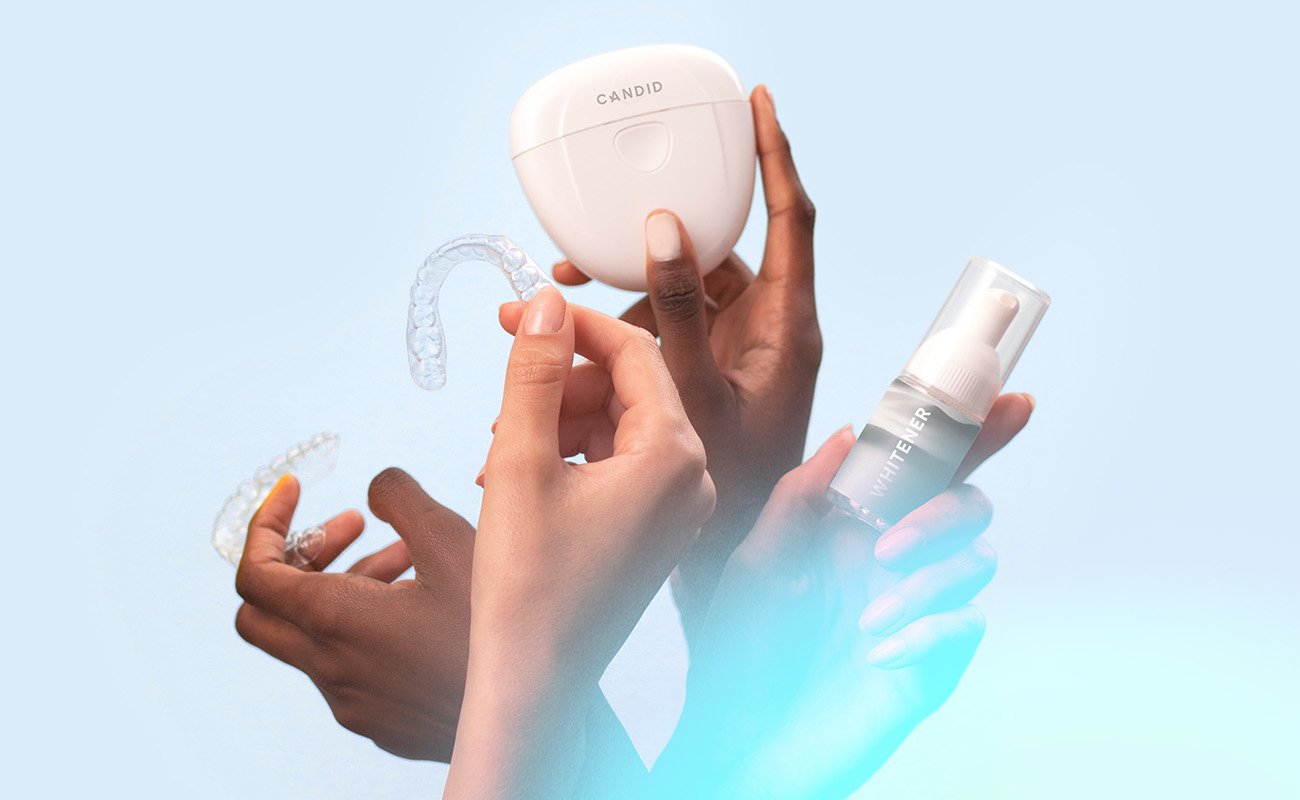If you’re seeking a solution for crooked or misaligned teeth, you may be wondering about the differences between nighttime aligners and all-day ones. This Night vs all day aligners comparison will delve into the distinctions between these two orthodontic treatments, including when they are worn, the conditions they treat, the materials used, their effectiveness, and other frequently asked questions. By exploring these aspects, you’ll gain insight into which option is best suited for your dental needs and lifestyle.
Wearing Time
Starting with treatment duration, all-day aligners typically require a wear time of around 22 hours per day. While they should be removed for eating, brushing, and flossing, they must be worn consistently throughout the day to be effective.
On the other hand, nighttime aligners are worn for a shorter duration, usually around 8-10 hours while sleeping. Although they are only worn during the night, they still apply gentle pressure to the teeth, working to correct misalignment over time.
See our article: Can I Wear my Aligners at Night Only?
Worth Knowing
A survey in the Journal of Orofacial Orthopedics reports that 83% of patients adapted to their aligners within the first week.
Treatment Times
All-day aligners offer a quicker path to straighter teeth for those with minor dental misalignments, typically wrapping up treatment in just four to six months. For more complex cases, however, this timeline can stretch to over a year.
In contrast, nighttime-only aligners, designed for shorter daily wear, generally lead to longer treatment times. Users should expect to spend about 8 to 10 months in treatment, a reflection of the compromise between the ease of nightly wear and a more gradual journey to achieving dental alignment.
See our reviews of The Best Clear Aligners.
Cost
Although there is a huge cost saving when treating your teeth with clear aligners versus other types of braces, there are minimal cost savings when opting for either all-day or nighttime versions of aligners with most brands, although generally nighttime only aligners are slightly more expensive. For instance, Byte’s All-Day Aligners cost $1,999, while their At-Night Aligners cost $2,399.
See our article: Night Aligners for Teeth – PROs and CONs, Night Aligner Providers.

Byte
An affordable option with refundable impression kits, free HyperByte, and a Byte for Life guarantee.
Check out Byte AlignersMaterials Used
Both nighttime and all-day aligners are made from medical-grade, BPA-free plastics, which guarantees their high quality and safety for users. The distinct feature of nighttime aligners is the utilization of a thicker material, tailored to endure the wearing time throughout the night.
See our article about Nighttime Aligners Before and After.
Types of Issues Treated
All-day and night aligners are designed to treat various orthodontic issues, but the range and severity of conditions they can address differ. All-day aligners are generally more effective for a broader spectrum of orthodontic problems, including more complex misalignments and bite issues. Their extended wear time allows for more consistent pressure and faster progress in correcting teeth positions.
On the other hand, night aligners, which are worn for a shorter period are better suited for milder cases of misalignment. The reduced wear time means that treatment might take longer and might not be as effective for more severe orthodontic conditions.
Convenience
Nighttime aligners provide you with a convenient solution by eliminating the need to remove your aligners for every meal, snack, or during activities that aren’t compatible with wearing traditional, all-day aligners. This convenience might seem minor, but it significantly streamlines your routine, making the entire process much more manageable and less disruptive to your everyday life. You can enjoy your day without the constant interruptions for aligner maintenance, simplifying your orthodontic journey while still working towards your goal of a straighter smile.
Oral Hygiene
Maintaining good dental hygiene is essential when using both all-day and nighttime aligners. Regardless of the type of aligner being used, patients must brush their teeth at least twice a day, floss regularly, and use mouthwash to keep their teeth and gums healthy.
Daytime aligners, however, have an additional requirement of brushing after each meal to ensure that no food particles get trapped in the aligners. This is because food particles can promote bacterial growth, which can lead to dental problems like cavities and gum disease.
Nighttime aligners, while freeing users from the need to brush immediately after meals, still require diligent oral hygiene. Regular brushing, flossing, and the use of mouthwash are necessary to prevent bacterial buildup in the mouth, ensuring that wearing aligners at night doesn’t compromise dental health. This routine helps in keeping the mouth fresh and clean, safeguarding against dental complications that could arise from neglecting oral care.
Night vs All Day Aligners: Which One to Choose?
When it comes to choosing between nighttime or all-day aligners, the aesthetic benefits of going with a nighttime option are higher, as you only wear it when you are sleeping, but other factors should also be taken into account.
While treatment times are shorter for an all-day aligner and the cost isn’t drastically different from nighttime ones; you do have to worry more about forgetting to take out your device when eating or drinking and putting it back in too.
Both types of aligners will require you to keep a high level of oral care during treatment, although wearers of the nighttime version do not have to worry about food particles from a recent meal disturbing the treatment process so much.
However, the main focus when choosing your aligner should be ensuring you choose the right one for your situation. If your teeth straightening issue is anything more than very mild you are much better off opting for the all-day aligner to ensure a satisfactory outcome to treatment.
Frequently Asked Questions
Can I switch from day aligners to night aligners if I have already started the treatment?
If you have been advised to wear day aligners the issue with your teeth is likely such that it requires you to wear an aligner for 22 hours per day, so switching to a night aligner instead is not an option.
However, if your treatment is in the latter stages and tooth movement has already occurred it may be possible to switch to wearing an aligner for nighttime only at this stage.
Can I Wear Night Aligners During the Day?
The materials and construction of night and day aligners are different so you should adhere to wearing them as instructed. Wearing night aligners during the day could end up damaging your aligner over time and also affect the outcome of your treatment.
What Issues Can Be Treated With Night Aligners?
It takes around 20 hours per day of light pressure to move teeth effectively so night aligners will only be able to treat very mild issues with teeth including slightly misaligned bites or low-level overcrowding.
Night aligners are only worn for around 10 hours at night and are not very effective at large-scale tooth movement.
How Long Does the Nighttime Treatment Take?
Treatment time with nighttime aligners is slower than with the day version. Overall treatment time varies depending on a patient’s situation and whether they adhere to strict rules about wearing them for the correct amount of time per day, every day.
On average treatments take between 8 to 10 months.
Do Nighttime Aligners Cost More?
Night aligners do cost slightly more than day aligners due to the material being of a more premium nature and being thicker than its daytime counterpart.
However, choosing the right aligner should never be based on cost alone and consideration should be solely based on the best option to give a positive result to treatment.
Are Night Aligners Safe?
Yes, they are made of premium materials that are medical-grade and BPA-free. Night aligners are also thick in size and it is impossible to accidentally swallow them.
Do Night Aligners Hurt?
Unlike other forms of dental treatment, there is no pain associated with the use of aligners.
There may be some very mild discomfort when you first start wearing them and get used to the feeling of having one in your mouth but as they are custom-made to fit your mouth perfectly they should not hurt.
Sources
Nedwed, V., Miethke, R. R., Motivation, acceptance and problems of invisalign patients, J Orofac Orthop., 2005; DOI: 10.1007/s00056-005-0429-0. Available online at: https://pubmed.ncbi.nlm.nih.gov/15827703/
Alansari, R. A., Faydhi, D. A., Ashour, B. S., Alsaggaf, D. H., Shuman, M. T., Ghoneim, S. H., Linjawi, A. I., Marghalani, H. YA., Dause, R. R>, Adult Perceptions of Different Orthodontic Appliances, Patient Prefer Adherence. 2019; DOI: 10.2147/PPA.S234449. Available online at: https://www.ncbi.nlm.nih.gov/pmc/articles/PMC6916694/

